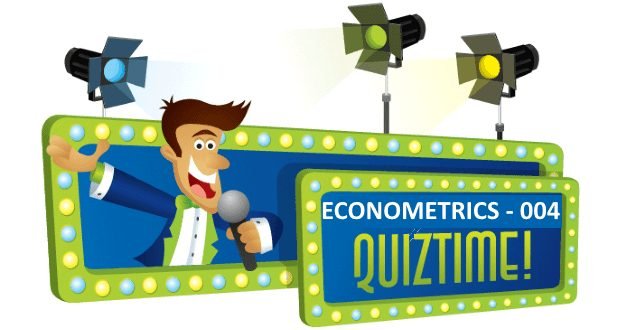500 câu trắc nghiệm Kinh tế lượng – 3C

Tổng hợp 500 câu trắc nghiệm + tự luận Kinh tế lượng (Elementary Statistics). Tất cả các câu hỏi trắc nghiệm + tự luận đều có đáp án. Nội dung được khái quát trong 13 phần, mỗi phần gồm 3 bài kiểm tra (A, B, C). Các câu hỏi trắc nghiệm + tự luận bám rất sát chương trình kinh tế lượng, đặc biệt là phần thống kê, rất phù hợp cho các bạn củng cố và mở rộng các kiến thức về Kinh tế lượng. Các câu hỏi trắc nghiệm + tự luận của phần 3C bao gồm:
SHORT ANSWER. Write the word or phrase that best completes each statement or answers the question. Provide an appropriate response.
1) Compare probabilities and odds. How can you convert odds to probabilities?
Probabilities compare the number of occurrences of an event A to the total number of outcomes. Odds compare the number of occurrences of event A to the number of occurrences of the complement of event A. If the odds for A are 13:6, then P(A) = 13/19 since there would be a total of 19 outcomes (13 + 6).
2) List two reasons it is better to sample without replacement when testing batches of products.
When sampling without replacement, should you use the multiplication rule for independent or dependent events? Explain your answer.
The two reasons include the lower chance of getting only good items when some defects are present, and sampling with replacement might allow you to test the same item more than once which would be inefficient. You should use the multiplication rule for dependent events, since the sample space has diminished and the probability of choosing a second good item has gotten smaller.
3) Suppose a student is taking a 5-response multiple choice exam; that is, the choices are A, B, C, D, and E, with only one of the responses correct. Describe the complement method for determining the probability of getting at least one of the questions correct on the 15-question exam. Why would the complement method be the method of choice for this problem?
P(at least one correct) = 1 – P(none are correct). The alternative to the complement method is to find P(1), P(2),…P(15) and take this sum. This method is too time consuming and too difficult.
MULTIPLE CHOICE. Choose the one alternative that best completes the statement or answers the question.
Express the indicated degree of likelihood as a probability value.
4) “You have one chance in ten of winning the race.”
○ 0.5
● 0.10
○ 0.90
○ 1
Find the indicated probability.
5) If a person is randomly selected, find the probability that his or her birthday is in May. Ignore leap years.
○ 1/365
○ 1/12
● 31/365
○ 1/31
Answer the question, considering an event to be “unusual” if its probability is less than or equal to 0.05.
6) Assume that a study of 500 randomly selected school bus routes showed that 479 arrived on time. Is it “unusual” for a school bus to arrive late?
● Yes
○ No
From the information provided, create the sample space of possible outcomes.
7) A coin and an octagonal die are tossed.
○ H1 H2 H3 H4 H5 H6 T1 T2 T3 T4 T5 T6
○ H1 H2 H3 H4 H5 H6 H7 H8 H9 H10 T1 T2 T3 T4 T5 T6 T7 T8 T9 T10
● H1 H2 H3 H4 H5 H6 H7 H8 T1 T2 T3 T4 T5 T6 T7 T8
○ H1 H2 H3 H4 H5 T1 T2 T3 T4 T5
Answer the question.
8) Suppose you are playing a game of chance. If you bet $10 on a certain event, you will collect $500 (including your $10 bet) if you win. Find the odds used for determining the payoff.
○ 1 : 49
○ 50 : 1
● 49 : 1
○ 500 : 510
Find the indicated probability.
9) 100 employees of a company are asked how they get to work and whether they work full time or part time. The figure below shows the results. If one of the 100 employees is randomly selected, find the probability of getting someone who carpools or someone who works full time.

1. Public transportation: 9 full time, 6 part time
2. Bicycle: 3 full time, 5 part time
3. Drive alone: 30 full time, 30 part time
4. Carpool: 9 full time, 8 part time
○ 0.13
○ 0.53
● 0.59
○ 0.27
10) The table below describes the smoking habits of a group of asthma sufferers.
| Nonsmoker | Occasional smoker | Regular smoker | Heavy smoker | Total | |
| Men | 348 | 40 | 66 | 36 | 490 |
| Women | 431 | 46 | 90 | 30 | 597 |
| Total | 779 | 86 | 156 | 66 | 1087 |
If one of the 1087 people is randomly selected, find the probability of getting a regular or heavy smoker.
○ 0.144
○ 0.459
○ 0.094
● 0.204